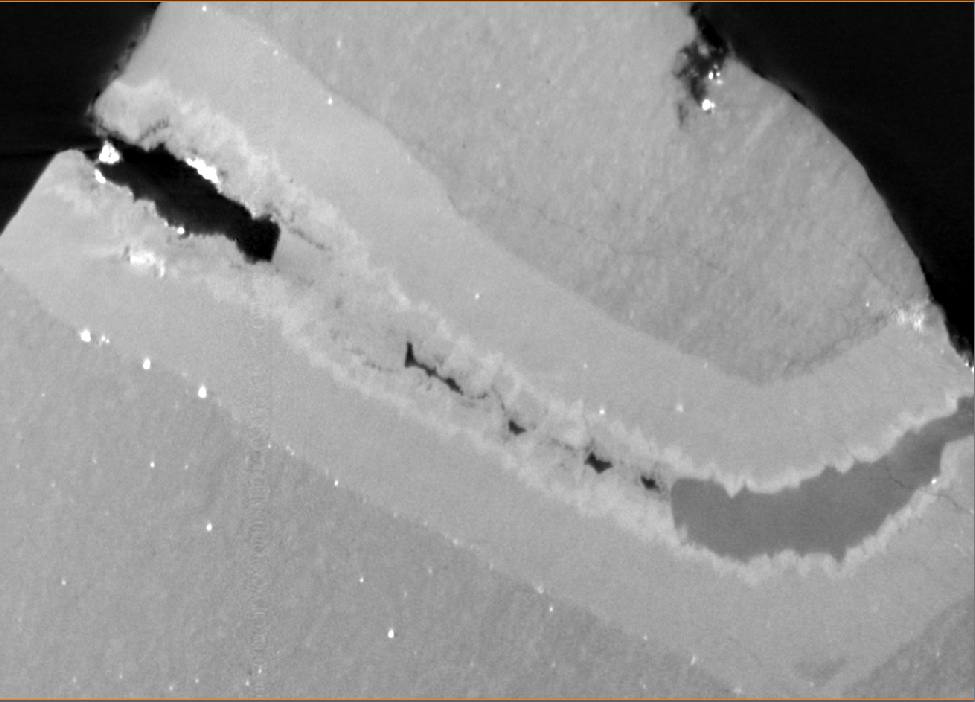
In this study, we examined a syntaxial vein contained in a shale mudrock. Specimens were obtained from Weatherford (Houston, TX, U.S.A.) and had come from a core sample (depth of ~10,400 ft) in the Upper Wolfcamp formation, a hydrocarbon source rock in the Permian basin (Texas, U.S.A.). The mudrock is roughly half quartz with the remainder comprising clay minerals (primarily illite), plagioclase and carbonates. The specimen featured in this project was about 2 cm in length and it contained a vein that was about 5 mm thick. In addition to the xCT analyses, 2D analyses (SEM-BSE-QEMSCAN, XRF) and powder XRD were done to identify the minerals in the vein and to quantify their relative amounts. These methods revealed that the first minerals to have precipitated (adjacent to the original fracture wall) were elongate crystals of dolomite as large as 900 microns. These crystals were overlain with a mixture of smaller carbonate crystals including calcite and iron-rich dolomite, interspersed at spatial scales as small as 5 microns. Precipitation of SiO2 was found to fill some of the void space. Quantitative analysis of the segmented 3D xCT image indicated that the vein volume is filled with 62% elongate dolomite crystals, 33% mixed dolomite and calcite, 1% silica, and 4% vuggy void space. Synchrotron X-ray scattering revealed that the vein mineral precipitates had porosity of ~1% and this is much less than the matrix rock porosity. This project was a partnership between Princeton University, the National Energy Technology Lab, the Ohio State University, and Oak Ridge National Lab. We thank Alan Kornacki of Weatherford for providing rock samples that contain mineral-filled veins. Initial work by researchers at OSU and ORNL were funded as part of the Center for Nanoscale Controls on Geologic CO₂ (NCGC), an Energy Frontier Research Center funded by the U.S. Department of Energy (DOE), Office of Science, Basic Energy Sciences (BES), under Award #DE-AC02-05CH11231. Analysis and writing by OSU and ORNL researchers was supported by the U.S. Department of Energy, Office of Science, Office of Basic Energy Sciences, Chemical Sciences, Geosciences, and Biosciences Division. We also acknowledge Johnathan Moore, Laura Dalton, and Bryan Tennant of the National Energy Technology Laboratory (NETL) in Morgantown, WV for their assistance with XCT scanning. Additional xCT scanning data is available at https://edx.netl.doe.gov/ which is NETL's online system for data archiving. The public link for this project is: https://edx.netl.doe.gov/dataset/computed-tomography-scans-of-naturally-mineralized-fractures-in-upper-wolfcamp-shale .
Catherine Peters (Princeton University)
April 9, 2020
ODC-BY 1.0
10.17612/P4WH-W011
The downloadable archive contains all project data; the size of the archive file for this project is 23.35 GB.
Download